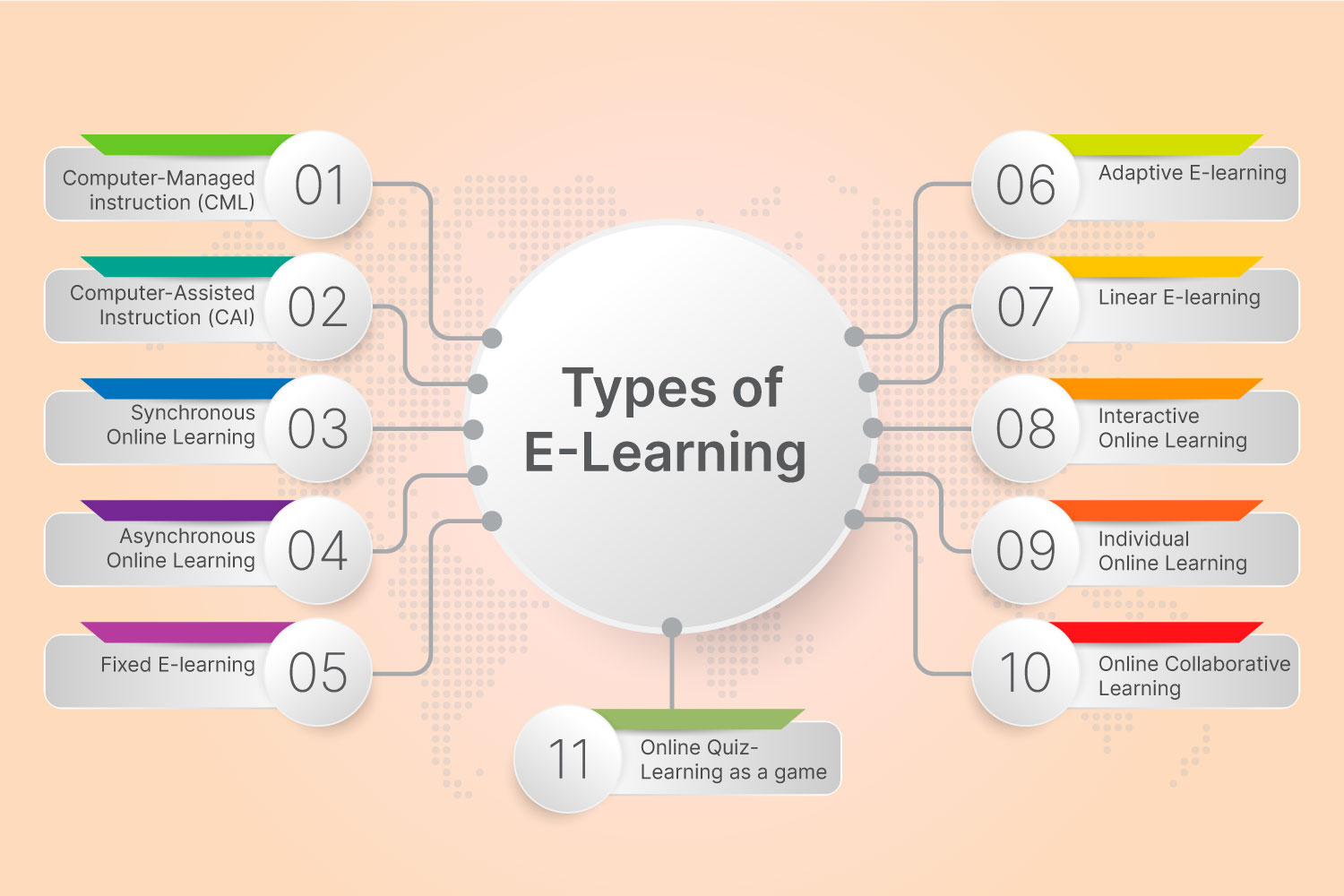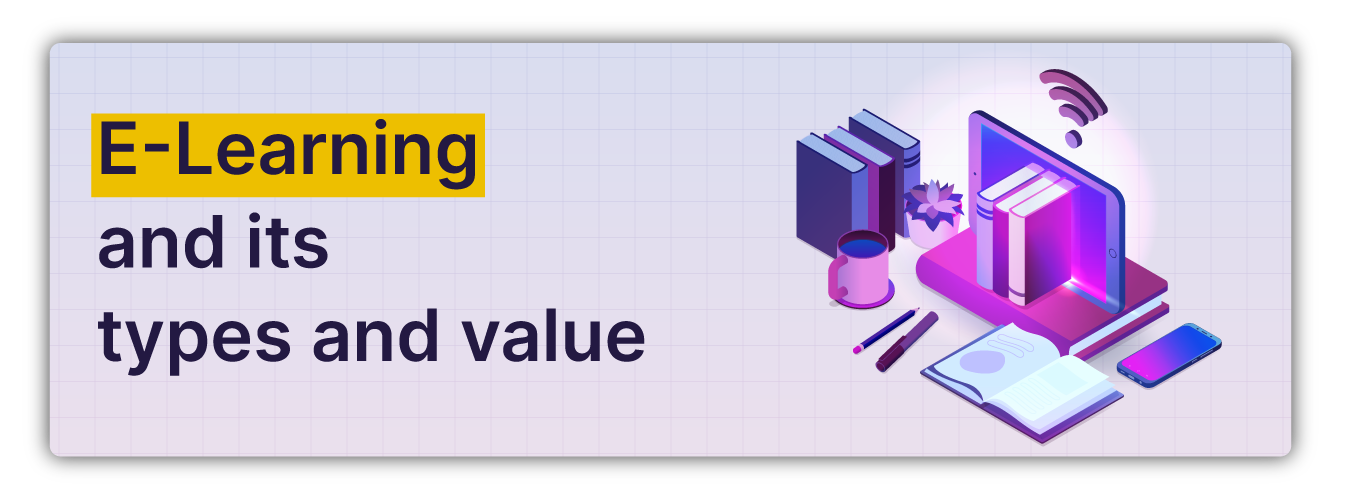Like it or not, a lot of us have had to adapt to e-learning over the pandemic. Necessity or preference, all of us have had to adapt to online learning over the past year. Here’s everything you need to know about it.
Introduction to E-Learning
E-learning, Online learning, or Digital learning- refers to the use of a computer to transmit course information. Whether it’s in a school, as part of your mandated business training, or as a full distance learning course. To put it another way, employing any technological technology to aid in the acquisition and extension of knowledge.
Technology-enhanced learning (TEL), computer-based instruction (CBI), computer-managed instruction, computer-based training (CBT), computer-assisted instruction or computer-aided instruction (CAI), internet-based training (IBT), flexible learning, web-based training (WBT), online education, virtual education, virtual learning environments (VLE), and other terms are all included in e-learning.
Videos, PDF documents, slideshows, and word documents are all put to use to conduct e-learning. It’s quite simple for anyone to teach themselves a new skill at their speed because of the availability of these tools.
Types of Online Learning
Computer-Managed instruction (CML)
(a) Computers manage and assess learning processes in computer-managed learning (CML), also known as Computer Managed Instruction (CMI). Computer-assisted learning systems. use information database.

(b) These databases contain bits of knowledge that student must learn, as well as several ranking characteristics that allow customization of the system for each student’s preferences. Due to the two-way connection between the student and the computer, it is possible to determine if the student met his or her learning objectives to a suitable degree. If not, the procedures can be repeated until the learner has met his or her learning objectives.
Computer-Assisted Instruction (CAI)
(a) Sometimes known as computer-assisted learning (CAL), is a sort of e-learning that combines traditional teaching with the use of computers.
(b)To promote learning, computer-assisted training methods use a combination of multimedia such as text, pictures, sound, and video. CAI’s benefits interaction, allowing students to become active rather than passive learners through the use of quizzes and other computer-assisted teaching and testing systems.
(c)This has further been accelerated over the pandemic.
(d) Most schools, both online and traditional, use various forms of computer-assisted learning to aid their students’ development of skills and knowledge.
Synchronous Online Learning
(a) Synchronous online learning allows students from all over the world to participate in one learning activity at once. Online chats and video conferencing are frequently used in real-time synchronous online learning. They allow training participants and instructors to ask and answer questions in real-time while communicating with other participants.
(b) Many of the usual downsides of e-learning, such as social isolation and poor teacher-to-student and student-to-student relationships, are now thought to be eliminated with synchronous e-learning. Synchronous e-learning is one of the most popular and rapidly expanding methods of e-learning today.
Asynchronous E-Learning
(a) Asynchronous online learning occurs when groups of students study separately at different times and locations from one another, without the benefit of real-time contact. Offering more flexibility, asynchronous e-learning approaches are to be more student-centered than their synchronous equivalents.
(b) As a result, students who do not have flexible schedules generally choose asynchronous e-learning since it allows them to learn at their own pace. They are not compelled to learn at regular time intervals with other pupils, and they can determine their learning schedules.
Fixed E-learning
Fixed e-learning is another name for something you’ve probably heard of before. In this sense, “fixed” denotes that the content used during the learning process does not alter from its initial condition and all of the students who participate receive the same information. The materials are chosen by the professors and do not adjust to the preferences of the students.
Adaptive E-learning
Adaptive e-learning is a novel and creative sort of e-learning that allows for the personalization and redesign of learning materials for each student. Such adaptive e-learning solutions allow education to become more individualized and student-centered than ever before by taking into account a variety of aspects such as student performance, goals, abilities, skills, and traits.
Linear E-learning
When it comes to human-computer connection, linear communication refers to the fact that information always goes from sender to receiver. This is especially true in the case of e-learning, as it prevents two-way dialogue between teachers and students. Although this form of e-learning has a role in education, it is becoming less important as time goes on.
Linear e-learning means the delivery of training information to students via television and radio broadcasts.
Interactive online learning
Senders can become receivers and vice versa with interactive e-learning, effectively establishing a two-way communication channel between the parties involved. Teachers and students can modify their teaching and learning methods based on the signals given and received. As a result, interactive e-learning is far more popular than sequential e-learning. The reason being that it allows teachers and students to converse more freely.
Individual Online Learning
Individual learning refers to the number of students actively involved in accomplishing the learning objectives, rather than the material’s student-centeredness.
This is because it focuses on pupils studying separately and without collaboration with other students, this form of learning is not optimal for building communicational skills and collaborative abilities in kids. As a result, a more contemporary method needs to replace communicational skills and talents.
Online Quiz- Learning as a game
Online quizzes have always been a useful way of learning, although they have gained popularity only recently. During the pandemic, they have garnered a lot of recognition. Studies have shown that gamification of studying proves quite effective. The use of games and activities helps retain the information in the minds of children and adults. You can try out our very own Auro Scholar App that draws from this.
Online Collaborative Learning
(a) Collaborative e-learning is a new style of learning where students learn and achieve their learning objectives together. To reach their common learning objectives, students must collaborate and practice cooperation.
(b)While this style of learning is more common in traditional classrooms than in online courses, it is nonetheless a genuine form of e-learning that, when done correctly, can be quite effective.
Computers and the internet are ubiquitous. There are many advantages of e learning. But is Online Learning right for you?
Topics that are not specific to a specific practice or organization, such as administration training, economic training, or time management, are examples of general topics. Asynchronous training is practical and cost-effective in these situations.
Traditional E-learning courses with pre-recorded CDs and write-ups are employed on projects with a significant budget and a long timeline, such as a major product launch.
Asynchronous approaches are suitable for asynchronous techniques where virtual classroom education does not work. These include industrial control systems, flight simulators, and so on.
Asynchronous E-learning may be appropriate for training with a long shelf life, such as a business report and foreword.
Digital Learning/E-Learning- New normal in the pandemic?
A lot of us have questioned the validity of e-learning over the pandemic. It is because we have to work remotely due to unavoidable circumstances. While some of us now prefer it, while others don’t- we’ve all got a chance to try it. Going forward, we can hope for it to be seamlessly implemented to maximize its value.


